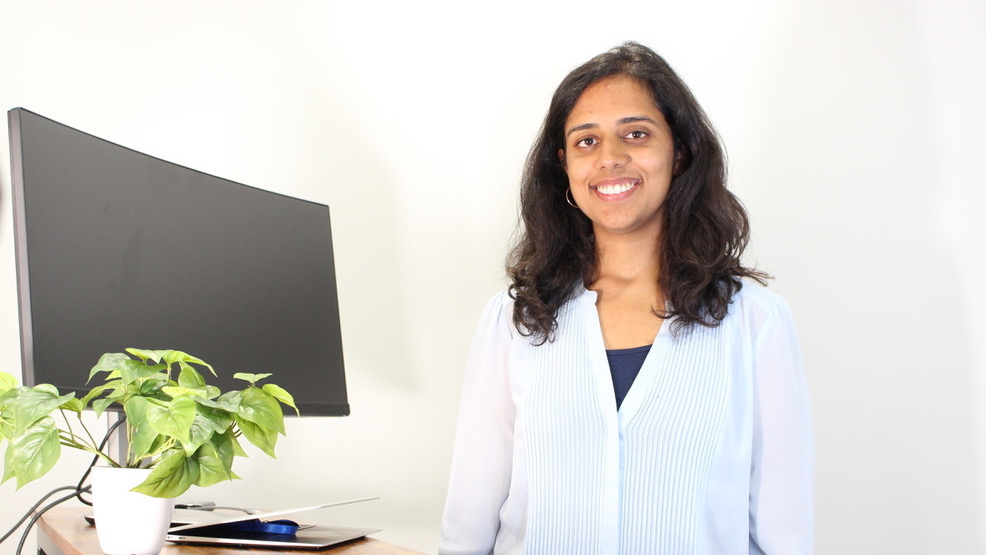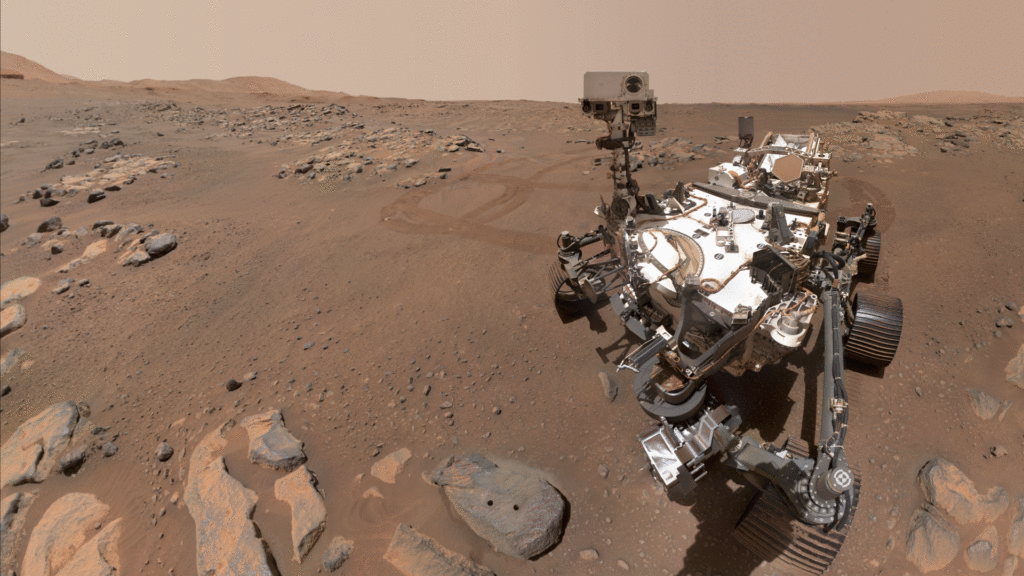Breaking into AI: How Jagriti Went From Zero AI Knowledge to Coding NASA Robots

Jagriti Agrawal is the co-founder and director of AI applications for Kira Learning, a startup that develops STEM curriculum for children ages K-12. She started her AI career, however, feeling hopelessly behind all of her peers. She spoke to us about her journey from outsider to engineer, and how her AI background helps her manage product development teams. She also shared an inside view of how she helped build an autonomous planning systems for NASA’s Perseverance rover.
Titles: Co-founder and director of AI applications at Kira Learning
Location: Palo Alto, California
Education: Master’s of Business Administration, Stanford University; Bachelor’s of Science, Computer Science, California Institute of Technology
Favorite data science area: Favorite data science area: Learning from data from the past to make the world better for the future
Tell me about your job. What are your primary responsibilities and how does AI fit into your day-to-day work?
My responsibilities fall into three main categories: Leading the development of content and curriculum; Improving our autograding capabilities and understanding how we can give better feedback to students more effectively using AI; And teaching.
AI fits into almost every part of my work, whether it’s because I am helping build AI courses, or I am thinking about how we can use AI thoughtfully to improve learning for students.
What is the most challenging thing about your job?
The most challenging thing is also in some ways the most exciting. We really would like for our courses and platform to provide students everywhere the opportunity to learn about the technologies shaping so much of our world. This allows them to make informed decisions about how they respond to those changes and how they want to impact the world. In order to do this, we need to partner with schools and districts, particularly those who have no existing CS or AI curriculum. This is certainly challenging, but I truly think it makes a huge positive impact for the next generations.
What is the most rewarding part of your job?
Recently I gave an in-person Kira class to middle school students who had just completed our Intro to AI Microcourse with my colleague Chris Gregg, our head of computer science education. There were a couple of students who I noticed in the beginning were very hesitant to participate or ask questions. During the class we tried to engage these students in particular so they would express their thoughts. By the end of the class our efforts had paid off and those students were engaging so much more. This felt really rewarding because I also used to be one of the students who was very hesitant to participate. Certain teachers and mentors helped me to begin to feel more confident. Besides building skill sets and knowledge, I think helping students believe in themselves and develop their self-esteem is one of the most impactful things that education has the power to do.
What is the most dramatic benefit you see in kids when you teach them computer science and AI?
As computer science, and specifically AI, increasingly impacts our daily lives, it is more critical that students learn how these technologies are built, and how they inform their lives and decisions. We need to start teaching these concepts early on. First of all, so students don’t feel behind when they enter college. Second, so they start thinking early about both the beneficial and harmful ways these technologies can be applied. AI will only become more powerful in the coming years, and we need to make sure that the people developing it are raised knowing how it impacts their lives, and that they have a responsibility to make the world a better place.
What is your first memory of encountering AI, and what made you decide it was a career you wanted to pursue?
I became interested in AI in college when I learned how it could be used to help doctors diagnose illnesses early, before they become too serious. This made an impact on me because I have witnessed some incorrect diagnoses with horrible consequences. I originally wanted to study biochemistry in college so I could help address little-known illnesses. I switched to computer science largely because it has so many different applications.
What advice do you have for others like you who may feel like they are behind?
Getting started in AI was really hard for me. I didn’t take my first computer science course until college, and even the intro to computer science classes I took there were filled with people who had years of experience. It took me a long time to realize that I struggled not because I wasn’t as smart or capable as others, but because I had fewer years of practice and learning than them. Collaboration with my peers and asking questions to teacher’s assistants and professors helped me get through it and learn. I am really very grateful to the many teacher’s assistants who take the time to help students like me understand the material, and help to keep us motivated.
Motivated seems like the right word, especially because after graduating you eventually got a job with NASA. How did that come about?
I interned at NASA’s Jet Propulsion Laboratory during the summer of my freshmen year. My mentor for that summer connected me to the lead of the AI group at the Jet Propulsion Laboratory, which is where they build the agency’s robots, and that’s how I got the opportunity to interview for a job with the AI team there.

You helped develop the autonomous planning system for the Perseverance rover. Can you tell me more about that project?
Let me give you some background. Traditionally, when a rover is operating NASA scientists are in charge of scheduling which science activities it performs each day, and the exact times it will perform them. Creating this detailed schedule takes a lot of time, during which the scientists could be doing other tasks. Also, our scientists have to be quite conservative in their estimates when scheduling the duration of each activity because if the rover were to take longer than expected then it may go into safe mode, which means all its essential systems would turn off until it receives a message from mission control.
I had two primary responsibilities: First, build an autonomous scheduling system for the rover that would take as input which science activities needed to be performed and output a schedule for those activities. Second, analyze the rover’s various tasks and come up with algorithms to help the rover react to uncertainty by itself if activities did take more or less time than expected. Together, these systems eliminated a lot of inefficiency and allowed the science team to focus more of their time doing scientific research.
What were some of the challenges you faced while developing these systems?
One main challenge involved the cost. The Perseverance mission had a $2 billion dollar budget, so we could not afford to take risks that might jeopardize it. Any new technology, such as the AI software I worked on, needed to be very thoroughly proven to work (and more importantly not cause harm), before being added to the mission. While this ensured it the software would be effective and safe, it also meant it took quite a long time to develop, and required many research paper publications to prove that we really should give the new technology a shot.
Another challenge was ensuring that the scientists who would actually be using the software trusted it and understood how it worked. Since this kind of system had never been used before on such a high-risk mission, it was important for the users to be able to understand why the software was making the decisions that it was. It couldn’t be a blackbox. To address this, we built an explainable AI tool that visually explained why the software was laying out the schedule that it was.
How did you go from working at NASA to founding an education technology company?
While at NASA, I began teaching at schools and libraries as part of an outreach program. I also began tutoring students without permanent homes with an organization called School on Wheels. After each teaching session, I felt an incomparable sense of fulfillment. These experiences, as well as my own history of building self-confidence through learning, prompted me to consider making an impact in that realm.
You have pursued education while also working. How do you balance the two?
I just finished my MBA, but I was working part-time during my second year. It wasn’t always easy to prioritize and I don’t think I did it perfectly, but what I found helpful was to always communicate with my company when work was too much to handle, or conversely when I could handle more. I was also grateful to have a CEO who encouraged me to communicate in this way.
How does your background in machine learning inform your role as a project manager?
I think one of the most important aspects of being a good project manager is the ability to understand and empathize with the engineers who are actually building your product. My background in machine learning has enabled me to understand their perspective since I have been through many of the challenges they face on a daily basis to get things working, oftentimes under high stress and urgency.
Having a background in ML also helps me manage Kira’s team developing our curriculum, since I have been through the process of learning ML in school. There are so many things I wish would have been better during my own learning process, which I reference as we develop content.
How do you keep learning?
I have quite a few friends from college who are working in AI, so talking with them about their work helps me keep up with the field. After our conversations I will intentionally Google news about advances in science and technology.
Connect with Jagriti Agrawal on LinkedIn!
Want to learn how AI knowledge can improve your career?